What is SaaS? Software as a Service | AppTrait Solutions
In the past, companies relied on on-premise software, requiring significant investments in hardware and maintenance.
In the past, companies relied on on-premise software, requiring significant investments in hardware and maintenance.
Did you know that 70% of SaaS startups fail due to poor planning and execution?
Welcome to the mobile app design World! Your app is a shining star in the store. It’s been downloaded by millions and is changing lives for the better.
People can’t get enough of its clever features. They love its intuitive navigation and stunning visuals.
That’s the power of a well-designed mobile app!
By 2026, the global market revenue of mobile apps will reach $614.40 billion.
Designing a great app is more about understanding your users. Create something that’s simply delightful to use. And trust me, that’s a skill anyone can master with a little guidance.
Ditch the intimidation and grab your imagination. We’re about to embark on a journey into the exciting world of design!
Think of your app as a conversation with your users. Good design is like speaking their language.
Hold on, before you start sweating about lines of code, let’s be clear. You don’t need to be a programmer to design a great app!
Remember, your app isn’t a solo act – it’s a two-way street with your users! Before you start building anything, put on your detective hat and gather intel.
User-centered design is all about crafting an app that solves their problems. It also delights their senses and makes their lives easier.
Here’s your toolkit for user research:
Remember, understanding your users well will help you create an app they’ll love.
Now, let’s lay the groundwork for your app’s success. Think of it like building a sturdy castle. You need a strong foundation first!

What’s your app’s mission? Is it to help people get fit, learn a new language, or connect with like-minded individuals? Having a clear purpose will guide your design decisions and keep you focused.
Who are you building this app for? Are they tech-savvy millennials or grandparents with flip phones? Understanding your target audience is crucial. It helps you create an app they’ll use.
What are the must-have features that will make your app stand out? Think about the core functionalities that will solve your users’ problems. These functionalities should also make their lives easier.
Imagine your user navigating your app with great mobile app design services. What’s the logical flow from one screen to another? Creating user flows will help you design an intuitive and easy-to-use experience.
Before you dive into coding, test your ideas with simple prototypes! Paper sketches, wireframes, and low-fidelity mockups are your friends here.
They’ll help you visualize your app. They’ll help you identify potential issues. You can also get feedback from users early on.
We’ve reached the fun part, let’s transform your app blueprint into a visual masterpiece.
Think of it like dressing your app for success. Instead of sequins and scarves, we’re using things like color, typography, and spacing.
Don’t worry, no fashion imitation passes here, just simple tips to make your app look like a million bucks (without actually spending one!).
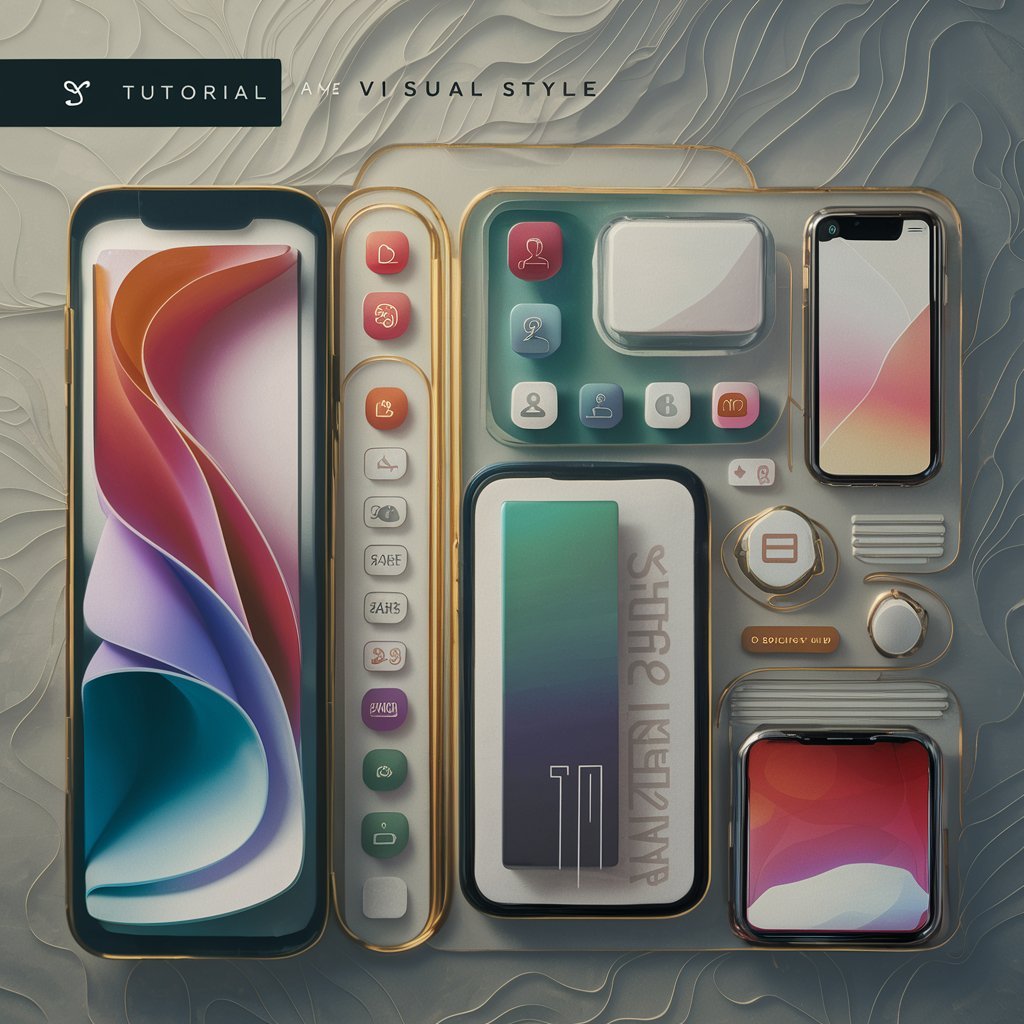
Imagine a stage with a dazzling performer, but then a spotlight also shines on the dusty curtain. Not so captivating, right? Visual hierarchy is like a spotlight. It guides users to the most important information first.
Think of headlines as bold singers that stand out. Think of secondary text as the supporting role. Think of clear buttons as eager stagehands.
Use size, color, and spacing strategically. Make sure users see what you want them to see. It will transform your mobile app development into a captivating performance.
Colors aren’t just pretty decorations – they’re powerful mood-setters! Red shouts “action!”, blue whispers “calm”, and green screams “freshness”.
So, choose your colors wisely! Think about your app’s purpose and target audience. Do you want to energize users with a vibrant palette or gently calm them with serene tones? Remember, color can evoke emotions and influence user behavior.
Choose wisely and watch your app come alive with personality.
Think of fonts as the voices in your app’s story. Do you want a playful, handwritten style for a kids’ game or a smooth and glossy, modern font for a business app? Choosing the right typeface is crucial for conveying your brand and setting the tone. Remember, readability is key.
Avoid overly decorative fonts that make users squint. Opt for clear, legible options that sing their message loud and proud.
Ever feel claustrophobic in a crowded room? Information overload can have the same effect on your app.
Spacing is like the air between words in a sentence, giving users room to breathe and focus on what matters. Use margins, padding, and whitespace strategically to create a visual hierarchy.
This helps prevent text from feeling cramped and makes your app feel airy and inviting.
Imagine a rockstar outfit. The shirt clashes with the pants, and the shoes are from another planet. Not a good look, right? The same goes for your app’s visual style.
Choose a color palette that works together. Choose fonts that complement each other. Choose spacing that feels consistent.
Think of it like a well-curated outfit. Everything should work in harmony to create a unified and appealing visual experience.
Now, it’s time to make our apps the smoothest, most intuitive rides users have ever taken.
We’re talking tap-dancing fingers, intuitive navigation, and accessibility that makes everyone feel welcome.
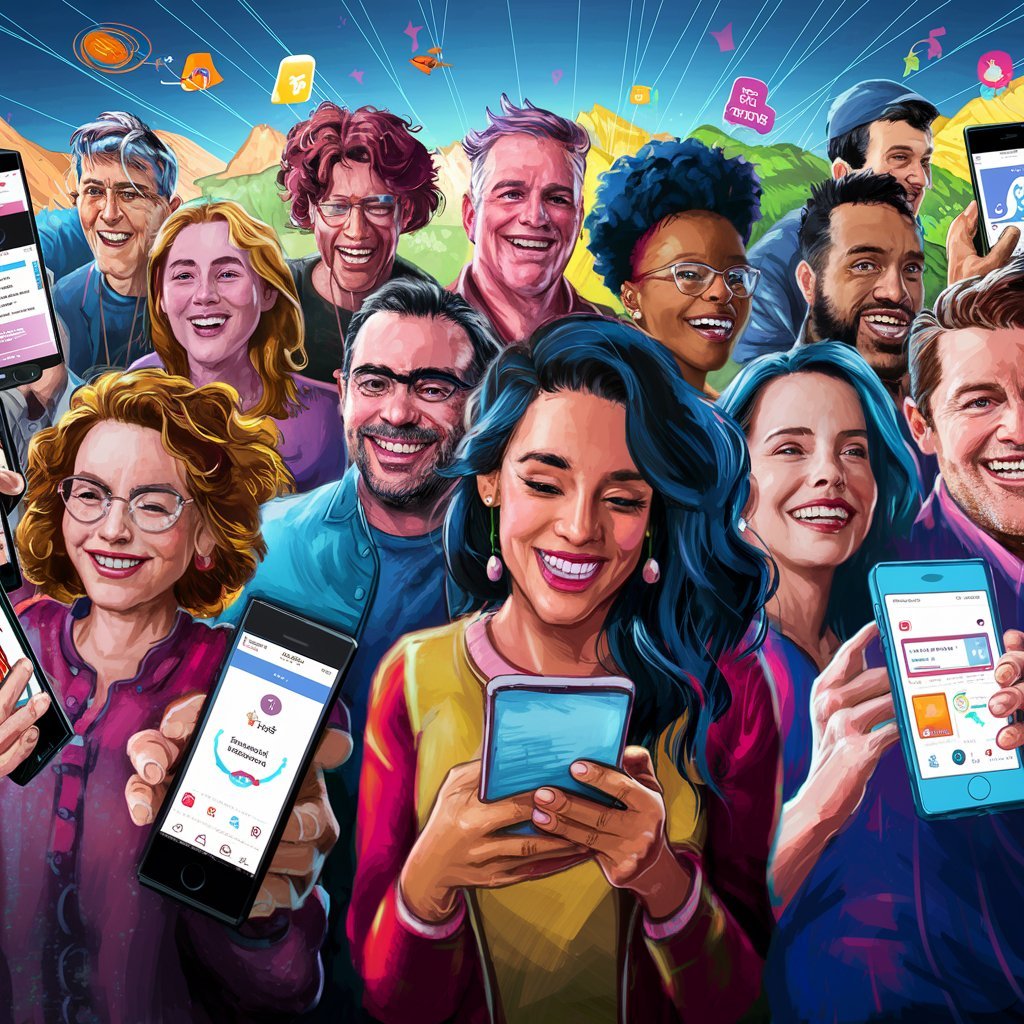
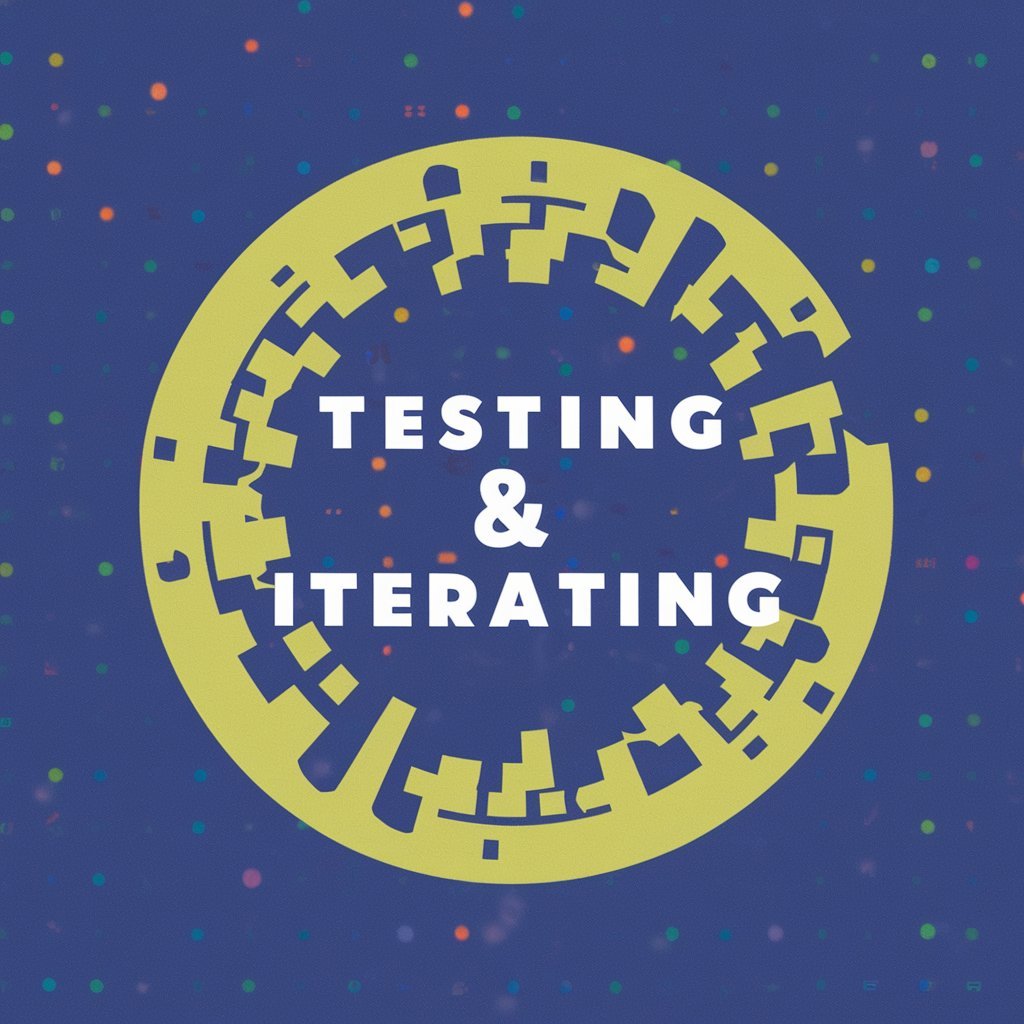
Imagine launching your app with stunning features and by great mobile app design services. Users are tripping over confusing buttons. They are muttering about menus that feel like a cosmic maze.
Ouch! User testing is your secret weapon to avoid such calamities. It’s about putting your app in real hands. Observe how people interact with it. Listen to their honest feedback.
Remember, feedback is not a foe, it’s a friend! Listen to your users’ gripes and suggestions with an open mind. Maybe the confusing menu needs a simpler layout. Perhaps the hidden feature deserves a spotlight.
The truth is, that testing and iterating shouldn’t stop at launch. Your app is a living, breathing thing, and it needs constant care and attention. Keep collecting user feedback through surveys, in-app analytics, and even social media interactions.
We’ve poured our hearts and minds into crafting an app with fantastic mobile app development. It’s not just functional, but a full-blown masterpiece. But the journey doesn’t end with the final line of code!
Now, it’s time to unleash your creation in the wild and watch it soar to the top of the app store charts. Buckle up, because we’re diving into the world of App Store Optimization (ASO) and beyond!

Read more about: How can education apps build trust through security and privacy.
This guide has been your compass, navigating you through the key steps of crafting a mobile app design services that wow by choosing the right mobile app design companies.
You know how to understand your users. You know how to build a strong foundation.
You’ve learned about making it visually stunning. And you’ve learned about ensuring a smooth, accessible experience.
You’ve discovered the secrets of App Store Optimization. You’ve also discovered the magic of ongoing engagement. Now, it’s time to take your newfound knowledge and turn your app dream into reality great mobile app development!
In this article, we’ll break down the things that affect the educational app development cost We’ll give you a general idea of what you can expect to pay.
The eLearning market is booming, and with it, the demand for educational apps. But how much does it cost to develop one?
According to Statista, the eLearning market is expected to be worth $337.5 billion by 2025.
Many factors, including the increasing popularity of online learning, are driving this growth.
The demand for personalized learning is growing. There is also a need for more flexible and accessible learning options.
Some big names are in the Edtech sector. They include TriviaMaker, Udemy, Khan Academy, and Duolingo. They have shown their potential with their digital learning offerings.
As a result of this growth, there is a growing demand for Education app development.
Educational apps can deliver many types of learning content. They cover basic literacy and numeracy skills as well as advanced professional training.
They can also personalize learning. They track student progress and give feedback.
Educational apps can serve many kinds of learners. They offer engaging, personalized experiences for people of all ages and backgrounds. Let’s explore who benefits most from these versatile tools:
Also Read, What is Domain Authority and How to Increase It?
In the age of smartphones and tablets, learning has gone mobile with educational apps. But are these apps fun distractions, or can they be powerful tools for students? Let’s delve into the world of educational apps. We will explore how they can revolutionize how we learn.
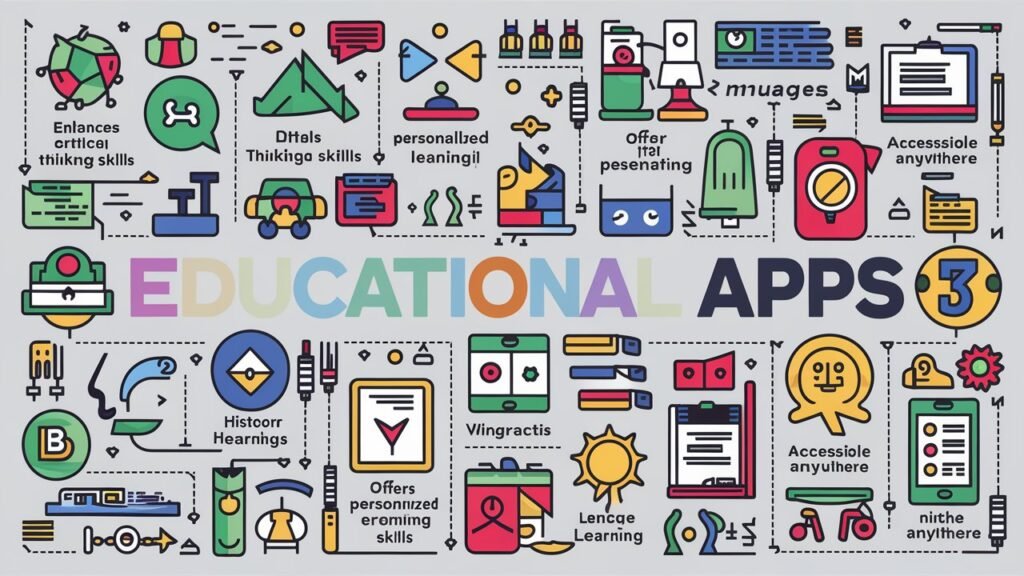
Ready to transform your educational idea into an engaging app?
Developing an educational app requires understanding eLearning and making a mobile app. Here’s a step-by-step process to consider:
Today’s tech-driven world is revolutionizing education. This is due to the rise of educational apps. But what makes an educational app effective? Get ready to explore the building blocks of successful educational apps!

In eLearning, making an educational app needs the right foundation. It needs the right tech stack. Let’s dive into the key tools you need. With them, you can create a successful learning experience!

The e-learning market is booming, and education apps are a major part of it. Are you considering making an educational app? You’re wondering how much it will cost. The answer, as with most things in life, is “it depends.”
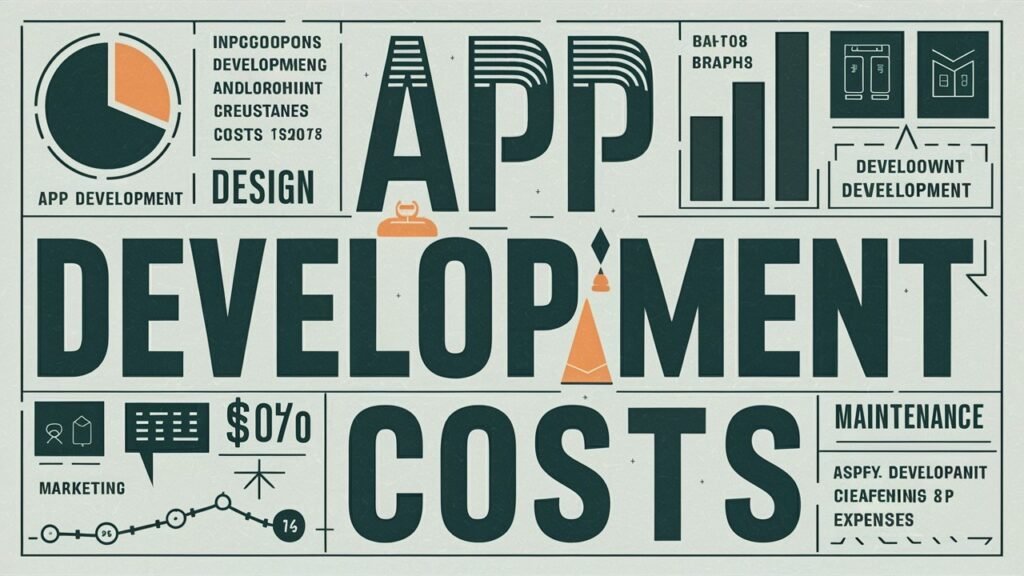
Several factors will affect the education app development of your education app. These factors include:
In today’s tech-driven world, educational apps are booming. But for a thriving app, there’s the hurdle of education app development cost. Fear not, aspiring educator! Let’s explore how to develop your educational app without breaking the bank.
Start building your dream education app.
AppTrait Solutions wants to help you turn your app idea into a reality. Here are some reasons why you should consider us:
Here are some additional benefits that we need to highlight:
Read more about: How can education apps build trust through security and privacy.
Read more about: Mobile App Design: A Simple Guide for Beginners.
The education app development market is booming. It offers exciting opportunities for both educators and entrepreneurs.
Creating a great app requires careful planning. You must understand your target audience and use the right technology.
Costs can vary based on complexity. Starting with a clear MVP and focusing on essential features can help keep costs low.
2. Do you offer custom app development or pre-built templates?
3. What is your app development process like?
4. How long does it typically take to develop an education app?
5. What platforms do your apps run on?
6. What is the average education app development cost?
7. What features are essential for effective education app development?
8. Do you offer any cost-saving strategies for app development?
9. What makes AppTrait different from other education app developers?
10. Can you provide examples of successful education apps you’ve developed?
11. What support do you offer after the app is launched?
12. Do you offer integrations with other educational tools or platforms?
13. How do you ensure the security and privacy of user data?
14. Can you help with marketing and promoting my education app?
15. How can I get started with developing my education app?
Education apps are key in modern learning ecosystems. They offer new and personalized solutions.
However, prioritizing security is essential for their development.
This includes safeguarding sensitive data, ensuring user privacy, and protecting the learning environment.
Educational apps often handle secret information. They are easy targets for cyber threats.
Understanding and using strict security measures is crucial. They provide a secure digital learning environment.
A 2023 report by the K-12 Cybersecurity Resource Center revealed that data breaches in K-12 schools rose by 44%. This happened in the 2021-2022 school year.
This refers to the measures taken to protect an app and its data by developing a proper app through mobile app development.
It’s from unauthorized access, use, disclosure, disruption, change, or destruction. In education apps, this translates to:
Protecting sensitive information like student names, grades, and progress reports from being intercepted.
This relates to the control individuals have over their personal information. In the context of education apps, this means:
Also Read, What is Domain Authority and How to Increase It?
Education apps collect a lot of sensitive information. It includes student names, grades, progress, and even geolocation data. This data can be incredibly valuable, but it also presents significant risks:
Data breaches are a big risk for educational institutions and app developers. They are prime targets for cyberattacks, which put student data at risk.
Security and privacy are vital in education app development. This is true for many key reasons:
Are you looking to develop a robust app for your business like “Triviamaker”.
We’re excited to turn your ideas into reality.
Security is crucial in education app development. It guards sensitive information and ensures safety and a positive learning environment. Here are the main goals to strive for:
By going beyond the basics and using these advanced security and privacy measures. Education app developers can build trust with users. They can also create a safe learning environment and follow regulations.
Protecting student data is crucial. Ensuring platform integrity and fostering a safe learning environment are also key. Going solo might seem like the most secure option. But, collaboration can be your secret weapon.
It helps you build a more robust and secure app by developing a proper app through mobile app development. Here’s how:
Choosing the right online learning platform for your students can feel overwhelming. Many education app development company are available.
It’s crucial to prioritize security and privacy. “This ensures a safe and positive learning environment with a guarantee. I will analyze the five popular platforms.
They are Khan Academy, Kahoot!, Seesaw, CK-12, and TriviaMaker. I will do this through the lens of data protection and user control.
In conclusion, Developers can build trust with users. They can ensure compliance with regulations by putting security and privacy first in education apps.
This involves transparency, data minimization, user control, and robust security measures. Advanced technologies and collaborative approaches can further enhance these platforms.
At AppTrait Solutions, we love creating engaging learning experiences. We do this through innovative education app development.
We understand the unique challenges and opportunities of app development. We are committed to providing our clients with the best solutions.
Read more about: Successful education app development and their strategies.
Read more about: Breaking Down Education App Development Cost.
Our team will be happy to build your project. We have expertise in bulding app. Don’t waste this opportunity!
In this article, we will explore education app development. Education has had a digital revolution. Educational apps stand at the forefront of this change.
Today, learning can be interactive, engaging, and accessible at the tip of a finger. But many apps compete for attention. What makes some stand out?
Understanding the strategies behind these impactful tools is key. This is true for developers, educators, and anyone using mobile learning.
The market for educational apps is growing exponentially. It is projected to reach a huge $567.19 billion by 2030. It will grow at 14.3% from 2023 to 2030.
Educational apps can boost student engagement. They also raise motivation, leading to better learning.
A meta-analysis of 45 studies found that students using mobile tools learned 20% more. This was compared to students using traditional methods.
Apps offer unmatched flexibility and personalization. They let learners progress at their own pace and satisfy their learning styles.
Choosing the right app development company is necessary to build your app.
Education mobile app development successful apps aren’t one way. It blends many factors. Each adds to a great user experience and good results. Here are some key aspects to consider:

The Education mobile app development Successful apps prioritize understanding their target audience. This means:

While defining success is multifaceted, measuring it requires concrete data. Here are some key metrics to track:
Get a free quote for your education app development project.

We’ve all heard the standard advice for achieving success, but what about the hidden gems? Let’s explore some lesser-known strategies for successful mobile app development that can propel you forward.
Making learning enjoyable and interactive to prevent boredom.

A project’s technical aspects are crucial for success. They influence the approach, tools, and final outcome.
Successful apps use AI to customize learning paths. They cater to individual strengths and weaknesses and recommend relevant content. This boosts engagement and knowledge retention.
Lagging apps kill motivation. Smooth performance, fast loading times, and offline functionality are crucial. They ensure a positive user experience.
AI-powered tutors personalize learning. They provide real-time feedback and adapt to individual needs. This creates a more efficient and effective learning experience.
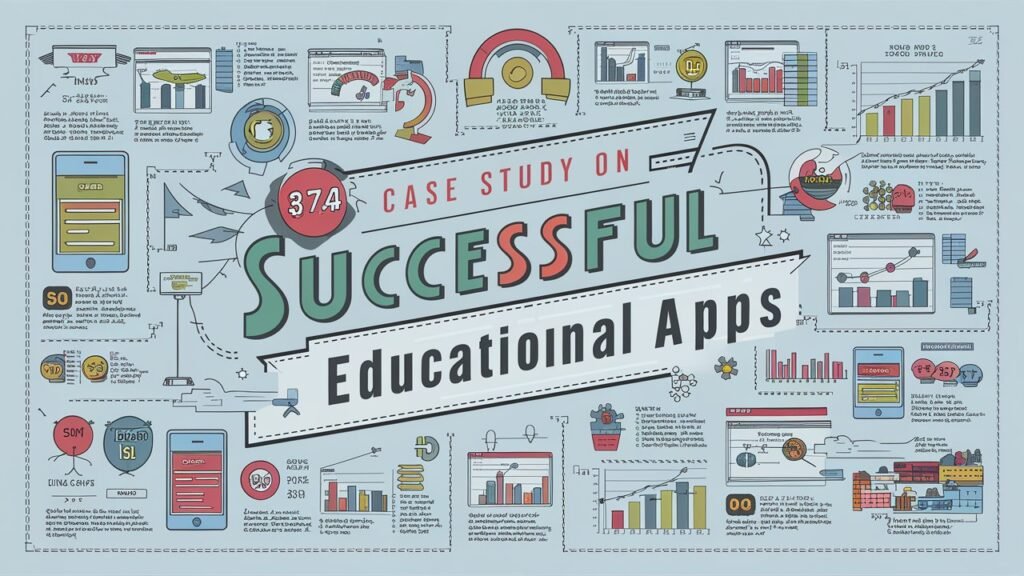
Gamification elements, multimedia content, and personalized learning paths keep users motivated.
Duolingo: A language learning giant, Duolingo boasts over 500 million users worldwide.
TriviaMaker: A custom quiz platform TriviaMaker, has grown exponentially since its inception in 2018.
Khan Academy: This is a non-profit platform Khan Academy. It provides free, high-quality resources in many subjects. These are mainly math and science.
The global eLearning market is expected to reach $387.2 billion by 2026. This shows the growing demand for mobile education.
A study by the Christensen Institute found that blended learning mixes old and new methods. It blends traditional methods with technology. It can improve student achievement by 20%.
Schedule a free consultation with our Expert app development company

Let’s find out some marketing strategies that you can implement in successful education mobile app development launches:
Partner with educators, YouTubers, or social media personalities. They can help you reach a wider audience and build trust.
Use platforms like Instagram and TikTok. Share engaging content, run contests, and talk with users.
Create platforms for users to connect. They can share tips and ask questions. This fosters a sense of belonging.
Publish blog posts, articles, and infographics relevant to learners and educators.
Optimize app descriptions, keywords, and screenshots to improve discoverability.
The education app development services offer basic features for free. It also offers premium features for a subscription or in-app purchases.
Partner with schools, institutions, or educational corporations for bulk licenses or sponsored content.
Implement targeted, non-intrusive ads to generate revenue without impacting user experience.
Leverage anonymized user data to provide valuable insights to educational institutions or publishers.
Adaptive learning: AI-powered platforms personalize learning paths based on individual needs and progress.
Immersive experiences bring abstract concepts to life, enhancing engagement and understanding.
Bite-sized lessons and activities cater to shorter attention spans and busy schedules.
Collaborative features encourage peer-to-peer learning and knowledge sharing.
Game-like elements like points, badges, and leaderboards motivate users and improve engagement.
Stand out by focusing on a unique thing. It should be comfortable and offer high-quality content. Also, use effective marketing strategies.
Regularly update the content. Add new features and use gamification. These steps keep users coming back.
Ensure secure data practices and transparent privacy policies to build trust with users.
Invest in good development. It will ensure smooth performance. It will also ensure offline use and work on all devices.
Try different ways to make money. Track how well they work to find the best one.
Read more about: iOS or Android? The Best Platform to Kickstart Your App
Successful education apps prioritize user engagement, provide high-quality content, and leverage innovative technologies.
Good marketing, monetization, and community-building strategies can help. They can help developers create tools that revolutionize learning.
The future of education app development is bright. Trends like AI, AR/VR, and microlearning are emerging. They are poised to personalize and improve learning.
At AppTrait Solutions, we love creating engaging learning experiences. We do this through innovative education app development.
We understand the unique challenges and opportunities of app development. We are committed to providing our clients the best solutions.
We have a team of experienced developers and designers. They are experts in making mobile apps for education. We understand the latest trends and tech. We can help you make an app that meets your needs.
We offer a wide range of services, from custom app development company to consulting and support. We can work with you to make a solution that fits your budget and timeline.
We focus on creating apps that are engaging and interactive for users. We use gamification and social learning. We use other techniques to keep users motivated and learning.
We are committed to helping our clients achieve their goals. We track the results of our apps and work with you to make sure that you are getting the most out of your investment.
We make sure to provide our clients with excellent customer service. We are always available to answer your questions and help you with any problems you may have.
We have a proven track record of success in developing education apps. We have worked with many clients, from small businesses to large enterprises.
1. How do education apps keep users engaged and motivated?
2. What data metrics are essential for tracking learning outcomes in an app?
3. How can apps balance accessibility with personalized learning to cater to diverse needs?
4. What are the key characteristics of high-quality content in an education app?
5. How can apps use media and AR/VR to improve learning?
6. What ethical considerations surround data privacy and security in education apps?
7. What role will AI play in the future of personalized learning and adaptive platforms?
8. How can AR/VR be used? They can create engaging and immersive learning experiences.
9. How can cloud-based platforms benefit users and ensure seamless access to learning materials?
10. How can app developers stay competitive in the ever-growing app store market?
11. What are the biggest challenges? It ensures user engagement and retention in education apps.
12. What are the most effective monetization strategies for education apps?
13. How can developers build a strong community around their education app?
14. What emerging trends in education technology should app developers be aware of?
Think about how often you reach for your phone in a day & how mobile app development made it possible. Mobile apps have become an essential part of our lives from checking emails to catching up on news.
By 2026, the global market revenue of mobile apps will reach $614.40 billion.
But developers and marketers ask: Which platform is best for my app? Android or iOS mobile app development?
This isn’t a Coke vs. Pepsi debate.
Choosing the right one is crucial for your success, so let’s dive into the factors you need to consider: But wait! The real drama wasn’t on your screen. It was before – when you choose which platform to build your app on.
Yep, that’s the battle royale of the mobile world: iOS vs. Android mobile app development (and the rising star, Flutter)!
Choosing the right platform is like picking the perfect superhero suit for your app. You want it to be powerful, versatile, and fit your app’s unique needs like a glove.
So, let’s dive into the arena and see who wins!
Think of your app as a rockstar. Who are its biggest fans?
Are they young tech-savvy trendsetters on Instagram? Or are they business professionals glued to their iPhones in boardrooms?
Understanding your target audience’s age, income, and tech-savvy is crucial.
iOS users tend to be younger, wealthier, and North American. Android fans are more diverse and spread across the globe.
Flutter is the new kid on the block. It is attracting developers with its cross-platform magic. However, its user base is still growing.
Your mobile app development features are like its superpowers. Does it need fancy AR filters or hardcore gaming graphics?
Some features, like better health tracking or AR, might be limited to one platform. Remember, complexity means more development time and money.
Flutter has a single codebase for iOS and Android. It can be a cheap option if you need basic features on both platforms.
How will your app become the next billion-dollar sensation? iOS users generally spend more on in-app purchases, while Android users are more open to ads.
Global reach is another factor. Android’s wider market share might be the way to go if you’re aiming for a worldwide audience.
Take a peek at successful apps like Spotify or TikTok. Analyze their platform choice, marketing strategy, and features. What made them rock their respective stages? Can you learn from their moves and apply them to your app?
Choosing the right platform isn’t about picking a winner. It’s about finding the perfect fit for your app. Remember, your audience, app features, budget, and money goals all play a part. Here’s a quick cheat sheet:
Keep an eye on emerging tech like foldable phones and AI. These could change the game for platform choice.
Read More About: KNOW HOW TO CUT COSTS WITH FLUTTER APP DEVELOPMENT
Read More About: SUCCESSFUL EDUCATION APP DEVELOPMENT AND THEIR STRATEGIES
The choice between iOS, Android, and new platforms like Flutter is crucial. It is key for mobile app development success.
The choice is affected by demographics and how money is made. So do budget limits and future trends.
Understanding the audience, app features, budget, and long-term goals help navigate the platform puzzle.
Looking to turn your idea into a game-changing mobile experience? Our top-notch mobile app development services can help you achieve.
In this article, We will explore how to cut costs with Flutter app development. The mobile app world is buzzing with possibilities. But, the high costs of development can feel like a big hurdle. This is especially true for new developers and budget-conscious entrepreneurs.
It’s a cross-platform framework that’s shaking things up. It promises a future where building beautiful, fast apps won’t break the bank.
Statista estimates that Flutter market share will reach 14% by 2024. This will solidify its rise as a powerful and cost-effective choice.
Flutter has an intuitive codebase and hot reload feature. It lets you write once and deploy to both Android and iOS. This cut development time and effort.
But how, exactly, does Flutter translate these promises into tangible savings? Get ready, developers. We’re about to dive into the world of Flutter and reveal its cost-cutting secrets.
When you think about a Flutter app, do you wonder what it takes to have it constructed and what price will be set on it? This would mean that the cost may change according to some elements such as how difficult your application is, design needs, and who the developers are.
Also Read, What is Domain Authority and How to Increase It?
With Flutter, it’s possible to tighten your budget and still reach a wider user base! Building apps for Android and iOS simultaneously with one codebase is the strength of this amazing framework. Thus, you would save much on development time and resources.
In some situations, using Flutter for designing applications that are good for both operating systems is just an awesome idea. Although, there might be issues to be aware of while in the process of developing an application.
Mastering Flutter app development requires dedication, but fear not! The initial climb is gentler than you might think.
Remember, learning has upfront costs. But, it pays off in the long run with faster development and broader skills.
Flutter has many native capabilities. But, some niche tasks might need plugins. But don’t Worry!
Remember, plugins are always changing. Your desired features might be nearby.
While Flutter is great in most cases, some hard tasks may need native speed-ups. But don’t let this discourage you!
The Flutter framework is very much useful for the creation of visually attractive, efficient apps not only for mobile devices but also for the web and desktop. To make it productive, here are a few of the most important approaches that need to be considered.
READ MORE ABOUT: TOP 5 FLUTTER DEVELOPER SKILLS YOU SHOULD MASTER IN 2024
READ MORE ABOUT: iOS or Android? The Best Platform to Kickstart Your App
Turn Your Idea into Reality. Stop Dreaming, Start Building.
This guide has unveiled the compelling cost-effectiveness arguments for embracing Flutter app development.
We’ve explored its cross-platform capabilities. They have streamlined workflows and efficient processes. They can greatly cut your development costs.
Code reusability and faster development cycles cut testing time. They also make use of open-source resources. Remember, start with a Minimum Viable Product.
Focus on essential features. This approach can further optimize your budget. It will also help validate your concept in the real world.
In this article, you are going to know everything about Flutter Developer Skills. So get ready to uplift your skills to the next level. Buckle up, because we’re diving into the top 5 Flutter skills you need to master in 2024.
Mobile app development is a vibrant and ever-evolving world. One framework is rapidly rising to the top is Flutter.
Its hot reload feature, clear UI, and native-like speed made it a favorite. Both developers and businesses love it.
In fact, Statistics projects that the global Flutter app developer community will reach 2.7 million by 2025.
This immense rise has created a booming demand for skilled Flutter developers. But with so many skills to master, it can be tough to know where to start, isn’t it?
Fear not! This article will equip you with the top 5 flutter skills you need to master in 2024. Buckle up, because it’s time to level up your game!
READ MORE ABOUT: Know How To Cut Costs With Flutter App Development.
Dart is a general-purpose programming language. It can be used for a wide range of jobs, like web, server, and mobile app development.
Also Read, What is Domain Authority and How to Increase It?
Widgets are the building blocks of Flutter. Mastering them is like knowing the alphabet of app development. Learn how they work. Learn their properties. Learn to build custom ones. This will unleash your creative potential. Trust me, your UI designs will thank you!
Managing the state is critical. It is key for building strong, quick, and efficient mobile apps. It refers to managing and changing data in an app. It ensures that the user interface (UI) shows the app’s current state.
Think of state management as the brain of your app. It controls how data flows and keeps everything in sync. Mastering it means:
Imagine your app having a split personality. One screen looks sleek and modern. The next looks like it’s stuck in the 90s. Not cool. Consistent UI is key to building a great user experience. Here’s how to achieve it:
Forget clunky transitions and hello to smooth, delightful animations! They’ll make your app feel polished and engage your users on a deeper level. Here’s how to get started:
The world of it is constantly evolving with its Flutter developer skills, and staying ahead of the curve is crucial. Here are some future-proof skills to add to your arsenal:
Being a great Flutter app developer isn’t just about technical skills. Building a strong network is crucial! Here’s how to tap into the power of the community:
Testing a widget involves many classes. It needs a test environment that provides the right widget lifecycle context. The most powerful & Important feature of Flutter is the DevTools package. It’s a collection of Flutter development tools that provide debugging and performance features.
This way your skill will be at the top by valuing flutter by providing flutter development services.
Mastering Flutter development will give your apps wings! Firebase is magic. You must use native plugins. You need clean code and performance tricks to enhance your Flutter developer skills journey.
Read more about: 5 red flags to Avoid While Hiring Flutter Developer.
Book a free consultancy with our Flutter app development experts to discuss your project.
This guide lists the top 5 Flutter skills. It will better your Flutter developer skills in 2024.
These skills include Dart, object-oriented programming, and creating stunning UIs with Widget Wizardry.
Mastering state management, animations, and future-proof skills will elevate your Flutter expertise.
Engaging the community, testing, debugging, and crafting are essential. So is optimizing for performance. These things make for great user experiences.
In this article, you will explore 5 red flags to Avoid While Hiring Flutter Developer.
